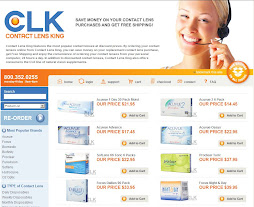The cornea of the eye is the ‘window’ that allows light to be reflected onto the retina to enable our sight. One of the irregularities that can afflict the cornea is the disease called keratoconus.
Keratoconus occurs most frequently during the teen years or early 20s. It causes the naturally rounded cornea to become more cone-shaped, resulting in nearsightedness, astigmatism, and light sensitivity. Changes in eyeglass prescriptions tend to be necessary upon each visit with the eye doctor and, for many years, patients were told they could not wear contact lenses. Fortunately, some excellent options have been developed and marketed. These options can provide keratoconus patients with a contact lens option in various lens materials and designs.
Initially, rigid gas permeable (RGP or GP) lenses were the only type of contact used because their firmness restored a symmetrical window, correcting the focus of light into the eye. However, there were cases where keratoconus made the eye so sensitive that GP lenses could not be worn due to pressure exerted on corneal tissue. A solution called ‘piggybacking’ was developed.
In ‘piggybacking’ eyes that cannot tolerate GP contact lenses are first fitted with a soft lens that is intended to act as a cushion. Then, a GP is fitted over the soft lens. This achieves both the comfort and correction needed to overcome the effects of keratoconus. The one concern with this method is the issue of oxygen permeability necessary to keep the eye healthy. Fortunately, the advance of hydrogel and silicone hydrogel lenses has greatly increased oxygen flow for their wearers; GPs have also improved in oxygen transmission by way of new materials development in that segment. Despite this advantage, ‘piggyback’ patients need to be monitored by their eye doctor to prevent any problems that might occur.
One other innovation is the hybrid lens, which combines features of GP and soft contacts. Unlike the ‘piggyback’ lens option where two different lenses are used, with the hybrid lens there exists a center portion, made of a non-pliable material, while the outer skirt is made of a soft hydrogel material. This type of contact lens performs a function in which the corrective window ‘vaults’ over the cornea, eliminating any uncomfortable pressure. This is closer to the fit wearers have come to expect from current lenses.
Being diagnosed with keratoconus is not an automatic sentence to eyeglasses. It may take some patience and close consultation and visits with your eye doctor, but the options available give lens users good opportunities to keep the freedom and comfort of contact lenses.
Subscribe to:
Post Comments (Atom)





No comments:
Post a Comment